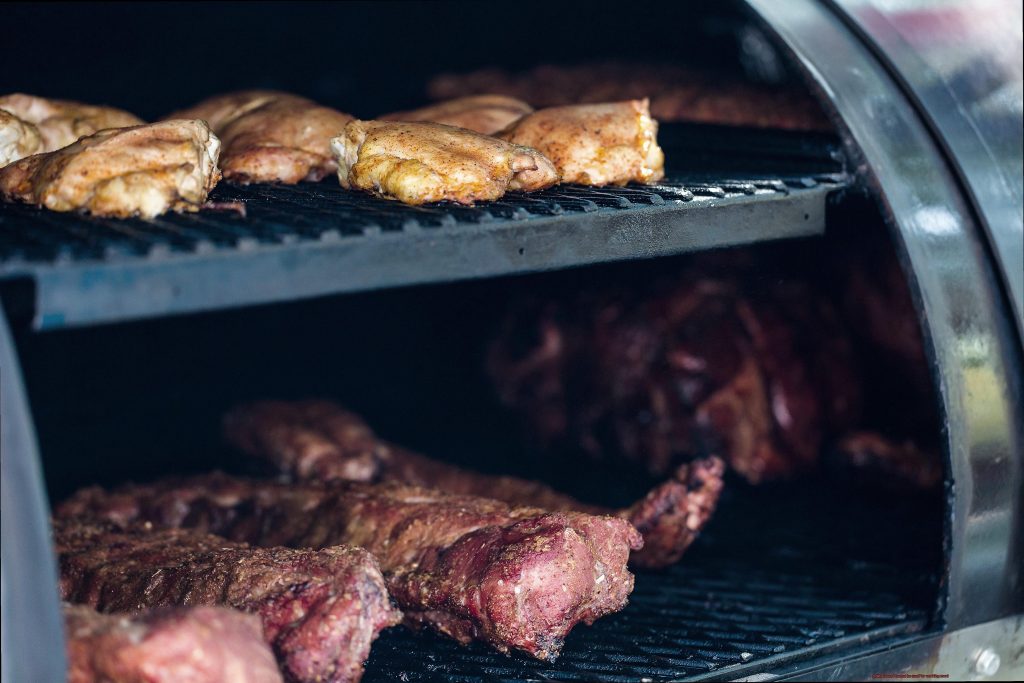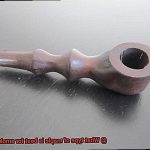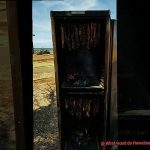Imagine this: the sun is shining, birds are chirping, and you’re getting ready to host a backyard BBQ with your closest pals. You’ve got the perfect cut of meat, a killer marinade, and all the seasonings you need to make your dish stand out. But have you considered the type of wood you’ll be using to smoke your meat?
Believe it or not, the wood you choose can make or break the flavor of your dish. While some woods can add a delicious smoky taste, others can completely ruin it. In fact, there are certain types of wood that should never be used for smoking meat.
In this blog post, we’ll explore what woods cannot be used for smoking meat and why they should be avoided. We’ll also provide alternative options that will give your dish that perfect smoky flavor without sacrificing taste.
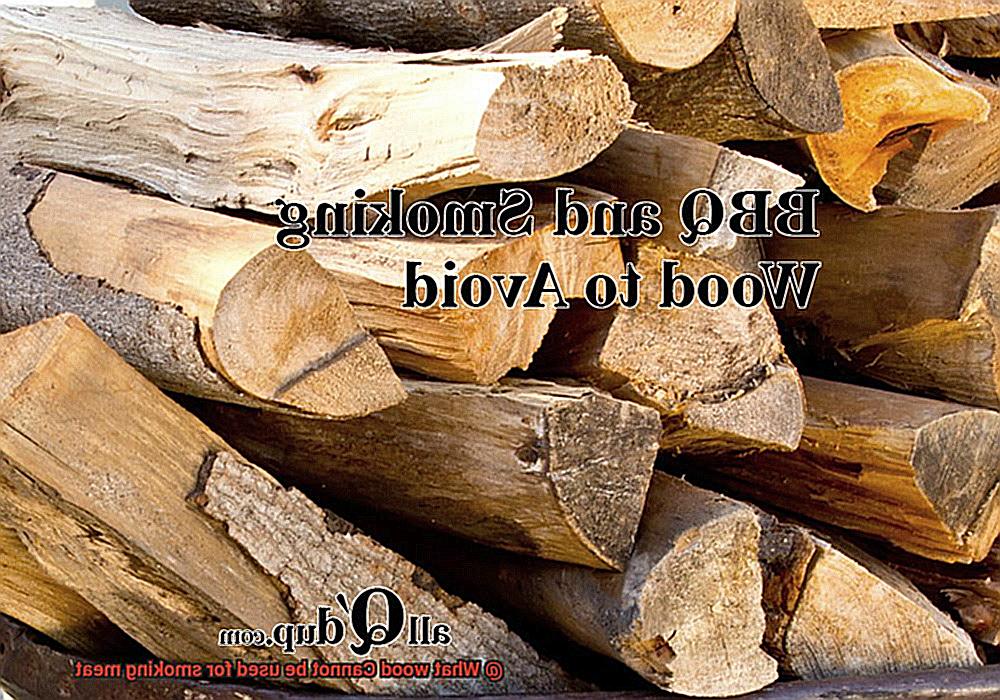
Whether you’re an experienced grill master or just starting out on your culinary journey, knowing which woods to avoid when smoking meat is crucial. So sit back, grab a cold one, and let’s dive into the fascinating world of wood and meat smoking.
Contents
What is Smoking Meat?
Smoking meat is more than just a cooking technique; it’s a time-honored tradition that dates back centuries. This method of food preservation adds an unmatched smoky flavor to meat while keeping it safe to eat by inhibiting the growth of harmful bacteria. The process of smoking meat revolves around three essential elements: smoke, heat, and time.
To smoke meat, the first step is to season it with a dry rub or marinade of your choice. Then, the meat is placed in a smoker where it’s exposed to smoke from burning wood. The heat source used to generate the smoke can be charcoal, wood, or electricity. The temperature inside the smoker is typically kept between 200-250°F (93-121°C) and the meat is left to smoke for several hours until it reaches an internal temperature that is safe to eat.
There are two main types of smoking: cold smoking and hot smoking. Cold smoking involves exposing the meat to smoke without cooking it, while hot smoking involves cooking the meat as it is smoked. Cold smoking is mostly used for foods like cheese and salmon, while hot smoking is used for meats like pork, chicken, and beef.
One of the most critical aspects of smoking meat is selecting the right wood. Different woods produce different flavors and aromas, so choosing the right one can make or break your dish. Some woods can be toxic or have an overpowering flavor that can ruin the taste of your meat. It’s essential to know which woods to avoid when smoking meat.
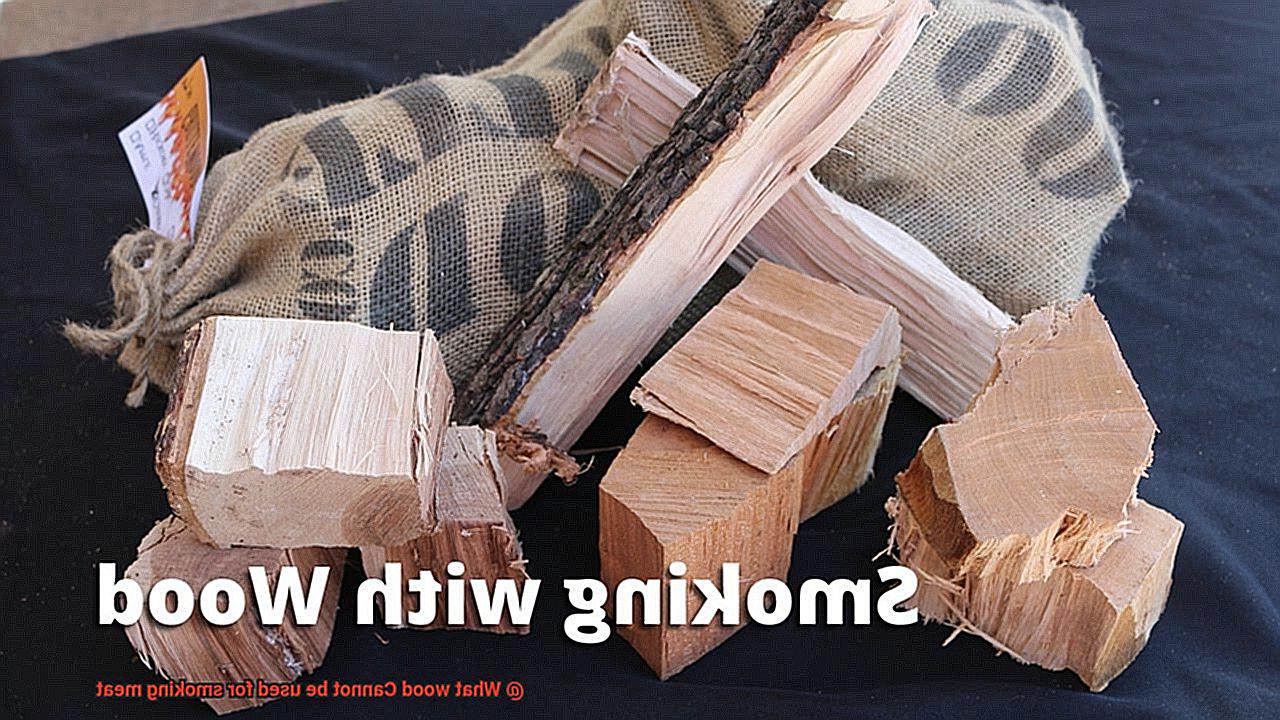
Avoid using toxic woods such as poison oak, poison ivy, or poison sumac. These woods contain urushiol, a toxic oil that can cause severe skin irritation and even respiratory problems when inhaled. Ingesting the meat smoked with these woods can also lead to gastrointestinal problems.
Treated lumber should also be avoided as it contains creosote-a highly toxic wood preservative that can cause cancer when ingested. Painted or stained wood should also be avoided due to the harmful fumes they release when burned.
Softwoods such as pine, fir, and spruce contain high levels of resin and sap, producing a thick smoke that can leave an unpleasant taste on the meat. Green or unseasoned wood should never be used for smoking meat as it produces excessive smoke and releases harmful chemicals such as formaldehyde and acetic acid.
What Wood Should Not Be Used for Smoking Meat?
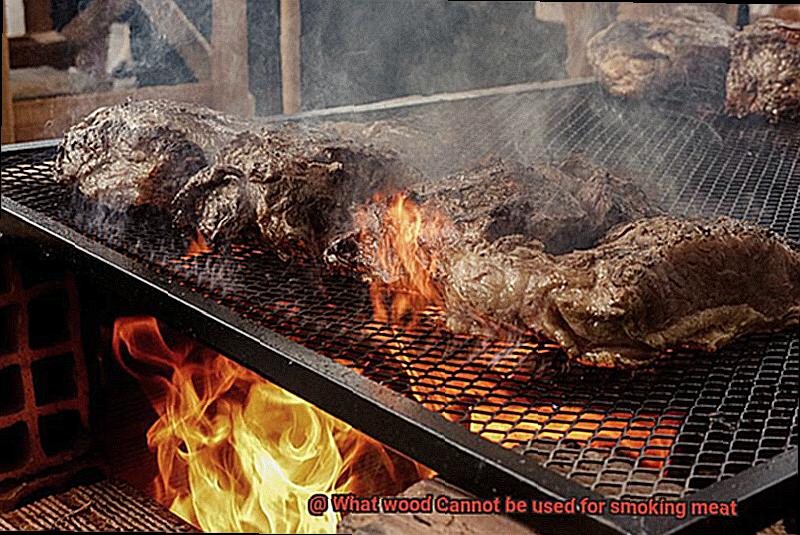
While there are plenty of suitable options to choose from, some woods should never be used for smoking meat.
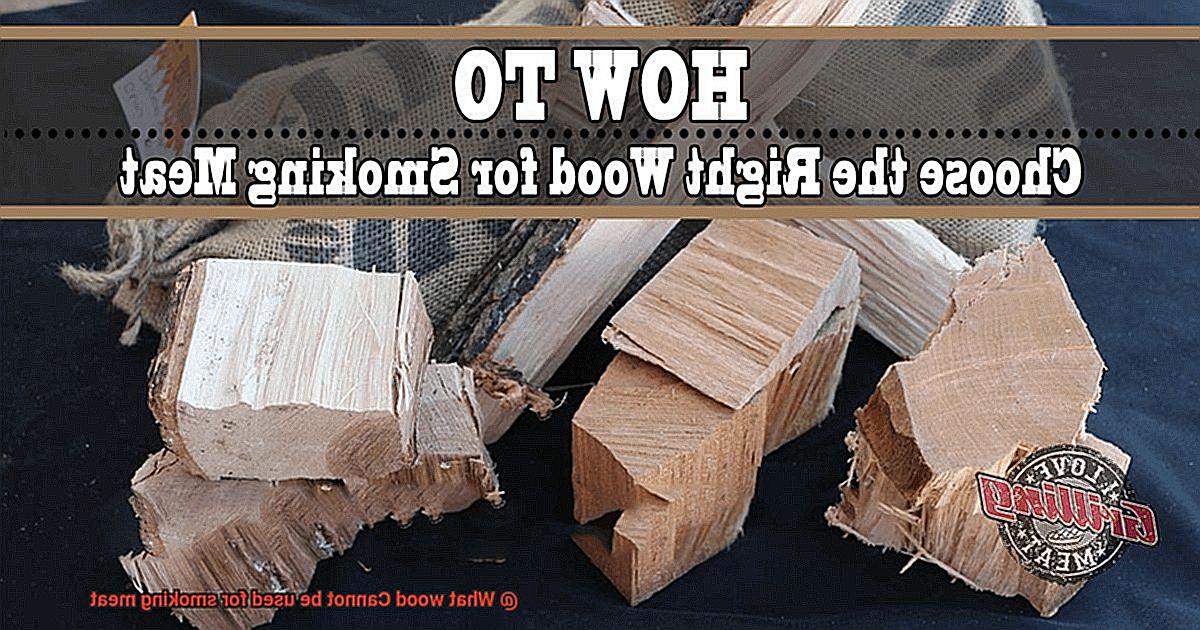
First and foremost, steer clear of softwoods like pine, cedar, and spruce. These types of wood contain high levels of resin that can leave your meat with a bitter aftertaste. Not only that, but the resin can also coat your meat in an unappetizing film.
Another type of wood to avoid is any that have been treated with chemicals such as paint, stain, or insecticides. When heated, these chemicals can release harmful toxins that are unsafe for consumption.
It’s also vital to avoid using wood that has been contaminated with mold or fungus. These microorganisms produce harmful toxins that can make you sick if ingested. Make sure to store your wood in dry conditions and avoid exposing it to moisture.
Instead, opt for hardwoods like oak, hickory, and mesquite. These dense woods burn slowly and produce a rich smoky flavor that complements various meats and dishes. Cherry, apple, and pecan wood are other popular choices among smoking enthusiasts.
Poison Oak, Ivy, and Sumac
Softwoods like pine, cedar, and spruce should be avoided, as well as Poison Oak, Ivy, and Sumac. While it may seem obvious to some, many individuals may not realize the dangers associated with using these plants for smoking.
Why are Poison Oak, Ivy, and Sumac unsuitable for smoking meat? These plants contain an oil called urushiol that can cause severe allergic reactions if it comes into contact with the skin. It can cause itchy rashes, blisters, and swelling. Imagine seasoning your meat with that. Worse still, burning the wood from these plants releases the urushiol oil into the air, causing respiratory problems for anyone who inhales it.
The bottom line? It’s best to avoid using any wood from Poison Oak, Ivy, or Sumac altogether when smoking meat to ensure the safety of those consuming the food.
It’s also important to properly identify any wood being used for smoking as some types of wood may be toxic or unsafe for consumption. For example, conifers such as pine or cedar should not be used for smoking as they contain high levels of resin which can create a bitter taste in the meat and potentially toxic fumes.
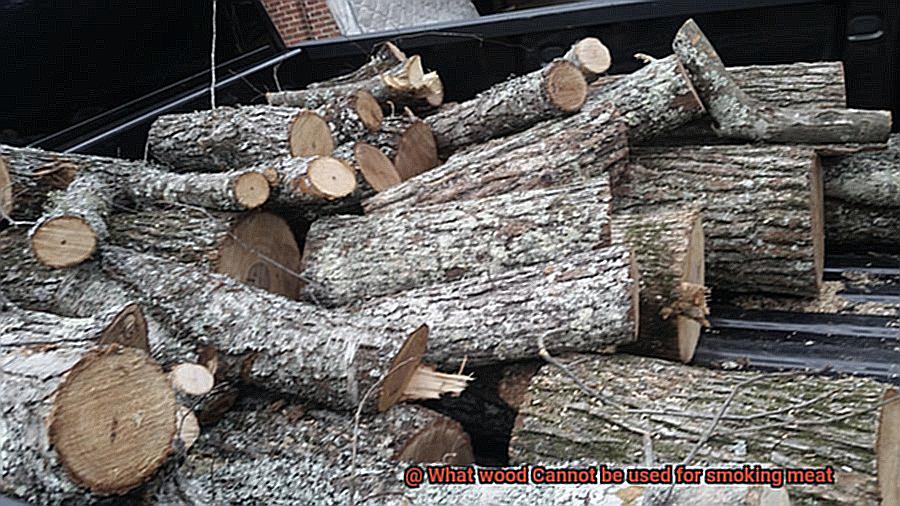
When selecting wood for smoking, stick with hardwoods such as oak, hickory, maple, and fruitwoods like apple or cherry. These woods provide a mild yet flavorful smoke that enhances the taste of the meat without posing any health risks.
Treated Lumber
If you’re a seasoned smoker, you know that the right wood can make or break your meaty masterpiece. However, not all wood is created equal, and it’s crucial to use the right type. Treated lumber, for instance, is a big no-no.
At first glance, treated lumber may seem like an attractive option since it’s readily available and pocket-friendly. But in reality, this type of wood is treated with chemicals that can be hazardous when burned. These chemicals include arsenic, chromium, and copper, which can be released into the air and inhaled when the wood is burned.
The consequences of inhaling these chemicals are dire and could lead to respiratory issues, skin irritation, and even cancer. Moreover, the chemicals can also contaminate the food being cooked on the wood, posing a significant risk to those who consume it.
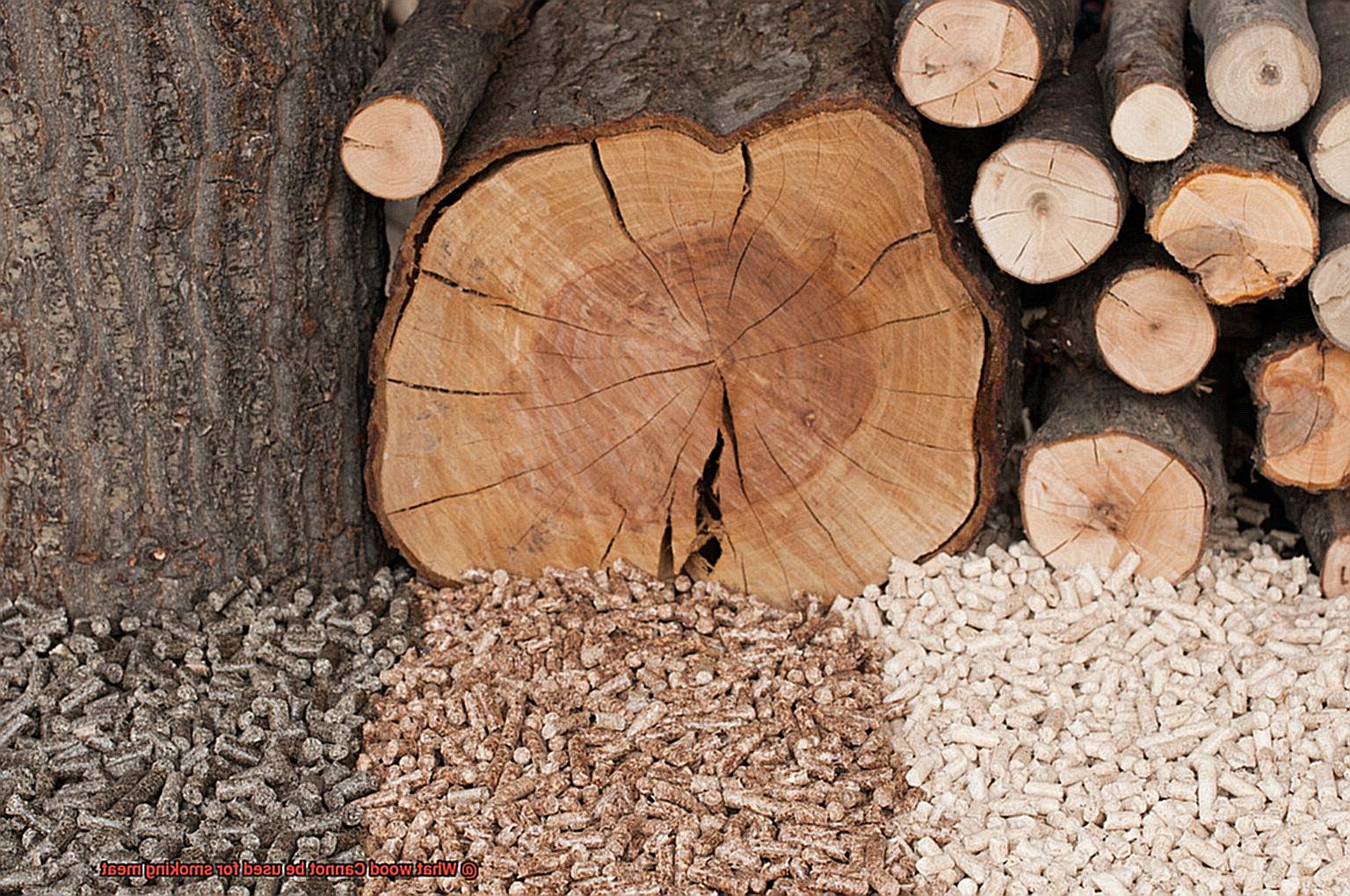
It’s worth noting that using treated lumber for smoking meat is illegal in many states due to the health risks associated with it. To ensure that you’re smoking meat safely, it’s essential to check your local regulations before using any type of wood for smoking meat.
For optimal results and safety, choose natural, untreated hardwoods like oak or hickory for smoking meat. These woods will infuse your meat with a mild yet delicious smoke flavor while keeping your health intact.
Painted or Stained Wood
The chemicals and additives present in the paint and stain can be harmful when burned and can drastically affect the taste of the meat.
Painted wood contains toxins like lead, zinc, and cadmium that are hazardous when inhaled. These chemicals are released into the air during combustion and can contaminate your meat with harmful fumes. Similarly, stained wood may not be safe for consumption and can contribute to an unpleasant taste.
Aside from health concerns, using painted or stained wood can also compromise the flavor of your meat. The chemicals present in the paint or stain can produce an acrid taste that detracts from the natural flavors of the meat.
To ensure that your smoked meats are safe and delicious, stick to natural hardwoods such as hickory, mesquite, applewood, cherrywood, and oak. These woods impart a unique flavor and aroma to your meats without compromising their safety or taste. It’s also important to research any new types of wood you may want to try before using them for smoking. Certain trees like pine, cedar, or spruce contain high levels of resin that can produce a bitter taste and toxic smoke.
Softwoods
Then you probably already know that choosing the right wood is crucial to achieving the perfect flavor. While hardwoods like hickory and oak are the tried-and-true choice for most grill masters, you might be tempted to use softwoods like pine or cedar in a pinch. But trust me, it’s not worth it.
As an expert in smoking meat, I can tell you that softwoods are a big no-no when it comes to smoking meat. Here’s why:
First off, softwoods contain high levels of sap. This sticky substance can create a thick smoke that overpowers the flavor of your meat and leaves a bitter taste in your mouth. Plus, the resin can leave an unappetizing and tough-to-eat sticky residue on your meat.
But sap isn’t the only problem. Softwoods can also be harmful to your health. When burned, they release creosote, a toxic substance that can cause health problems if ingested. Creosote can also build up inside your smoker or grill, leading to potential fire hazards.
So what should you use instead? Opt for hardwoods like hickory, oak, maple, or fruitwoods like apple or cherry. These woods have a lower resin content and produce a mild smoke that enhances the flavor of your meat without overpowering it.
Green or Unseasoned Wood
Fellow grill masters, let’s talk about the importance of choosing the right wood for smoking meat. It may seem like a no-brainer, but using green or unseasoned wood can lead to disastrous results. Let’s dive into why:
- Moisture overload – Green or unseasoned wood is packed with moisture, which causes excessive smoke and steam when burned. This can result in a bitter taste and ruin your entire smoking process. So, make sure to use properly seasoned wood.
- Seasoning is key – Wood seasoning is a process that removes excess moisture from the wood, allowing it to be used for smoking meat. This involves letting the wood sit in a dry, well-ventilated area for several months. Skipping this step will only lead to disappointment and wasted time.
- Harmful chemicals – Burning green or unseasoned wood can release harmful chemicals into the air and your food. These chemicals are produced when the moisture in the wood is burned and can potentially cause health problems. So, let’s steer clear of them altogether.
- Research is essential – Not all types of wood are suitable for smoking meat, even when seasoned properly. Some types of wood may contain toxins or produce unpleasant flavors when burned. Therefore, it’s crucial to do some research on which types of wood are best suited for smoking meat before starting the process.
But what types of wood should you use? For a mild smoke that enhances your meat’s flavor without overpowering it, consider using hardwoods like hickory, oak, or maple. Fruitwoods such as apple or cherry are also great options.
He-Nw5-LMrE” >
Conclusion
In conclusion, smoking meat is a revered culinary tradition that elevates the flavor of meat to new heights while also ensuring its safety by inhibiting the growth of harmful bacteria. However, the secret to achieving that perfect smoky flavor lies in the type of wood you use. While some woods can impart a delicious taste, others can completely ruin your dish. Therefore, it’s imperative to know which woods cannot be used for smoking meat.
Steer clear of toxic woods such as poison oak, poison ivy, or poison sumac. Treated lumber should also be avoided due to the highly toxic wood preservative creosote. Painted or stained wood should be off-limits too since they release harmful fumes when burned. Softwoods like pine, fir, and spruce contain high levels of resin and sap that produce thick smoke with an unpleasant taste on meat. Green or unseasoned wood should never be used for smoking meat since it produces excessive smoke and releases harmful chemicals.
Instead, opt for hardwoods like oak, hickory, and mesquite that impart a rich smoky flavor to your meats. Cherry, apple, and pecan wood are other popular choices among smoking enthusiasts that add a unique twist to your dishes. It’s equally important to correctly identify any wood being used for smoking as some types may be toxic or unsafe for consumption.
Choosing the right wood is pivotal in achieving the perfect flavor when smoking meat.

